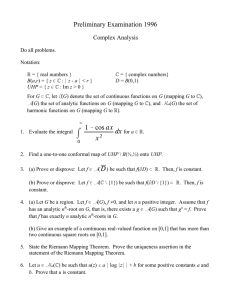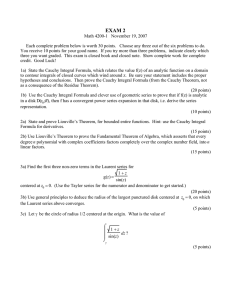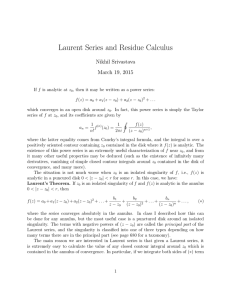Math 4200 November 16, 2005 EXAM 2
advertisement
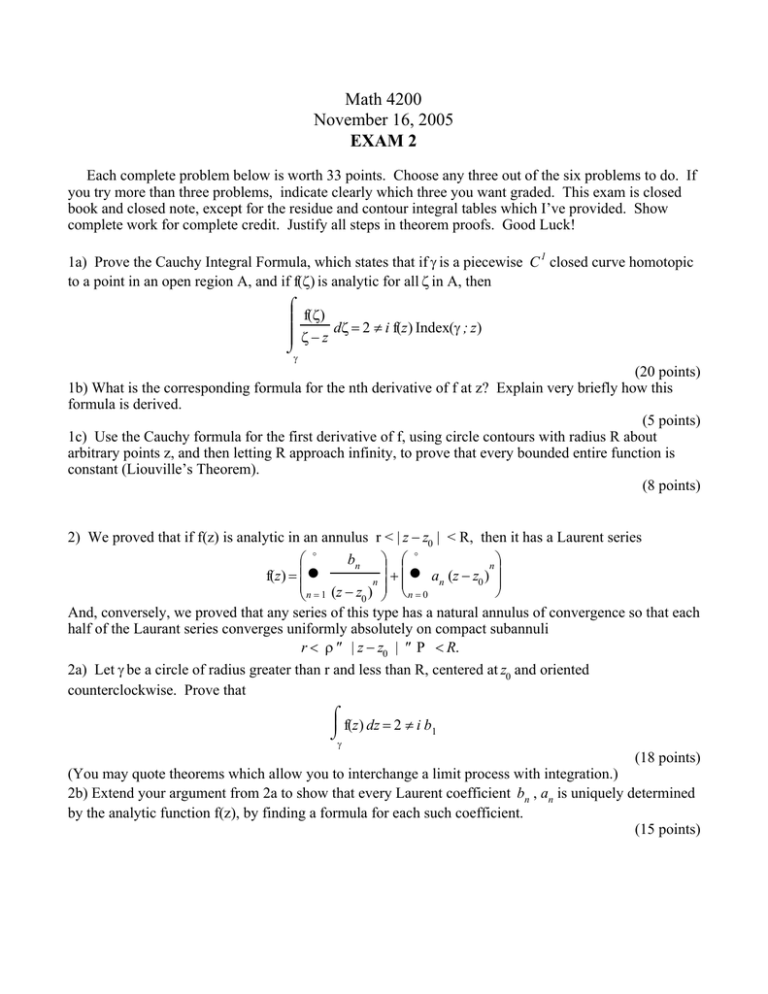
Math 4200 November 16, 2005 EXAM 2 Each complete problem below is worth 33 points. Choose any three out of the six problems to do. If you try more than three problems, indicate clearly which three you want graded. This exam is closed book and closed note, except for the residue and contour integral tables which I’ve provided. Show complete work for complete credit. Justify all steps in theorem proofs. Good Luck! 1a) Prove the Cauchy Integral Formula, which states that if γ is a piecewise C 1 closed curve homotopic to a point in an open region A, and if f(ζ) is analytic for all ζ in A, then ⌠ f(ζ) dζ = 2 π i f(z) Index(γ ; z) ζ−z ⌡ γ (20 points) 1b) What is the corresponding formula for the nth derivative of f at z? Explain very briefly how this formula is derived. (5 points) 1c) Use the Cauchy formula for the first derivative of f, using circle contours with radius R about arbitrary points z, and then letting R approach infinity, to prove that every bounded entire function is constant (Liouville’s Theorem). (8 points) 2) We proved that if f(z) is analytic in an annulus r < | z − z0 | < R, then it has a Laurent series ∞ bn ∞ n + f(z) = a ( z − z ) 0 n = 1 (z − z )n n = 0 n 0 And, conversely, we proved that any series of this type has a natural annulus of convergence so that each half of the Laurant series converges uniformly absolutely on compact subannuli r < ρ ≤ | z − z0 | ≤ Ρ < R. 2a) Let γ be a circle of radius greater than r and less than R, centered at z0 and oriented counterclockwise. Prove that ∑ ∑ ⌠ f(z) dz = 2 π i b1 ⌡ γ (18 points) (You may quote theorems which allow you to interchange a limit process with integration.) 2b) Extend your argument from 2a to show that every Laurent coefficient bn , an is uniquely determined by the analytic function f(z), by finding a formula for each such coefficient. (15 points) 3a) Find the first four non-zero coefficients in the Laurent series for ez f(z) = z sin(z) at z0=0. (20 points) 3b) What is the outer radius of the largest punctured disk about the origin in which the Laurant series for f(z) converges? Explain! (5 points) 3c) Let γ be a circle centered at the origin, oriented counterclockwise. Compute ⌠ f(z) dz ⌡ γ (8 points) 4) Use the residue theorem to compute π ⌠ 4 sin(θ ) dθ. ⌡ 0 (33 points) 5) Use contour integration to compute ∞ ⌠ 1 2 dx 2 (x + 1 ) ⌡ 0 If you use a contour integration table entry to find the value, you must prove why the table entry is valid. Alternately, you may justify your computations for this particular case. (However, you are free to use the residue table without justification.) (33 points) 6) Here are the first few terms in the Taylor series for z π cot(π z) at the origin: π2 2 π4 4 2 π6 6 π8 8 z π cot(π z) = 1 − z − z − z − z + O(z10 ) 3 45 945 4725 Explain carefully how you can use the residue theorem to deduce from this expansion the value of ∞ 1 6 . n=1 n (And identify what this value is!) You may assume, for the sake of your estimate details, that the modulus of cot(π z) is at most 2 whenever the real or imaginary part of z is a half integer. (33 points) ∑
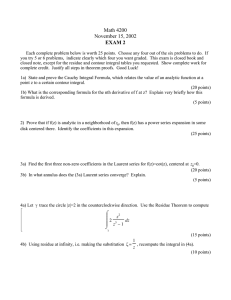
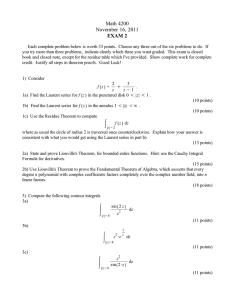
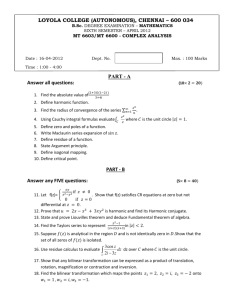
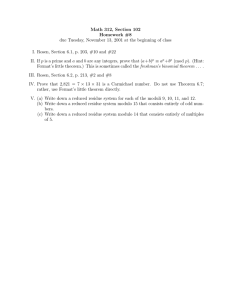
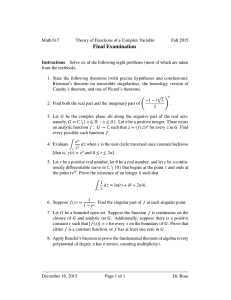
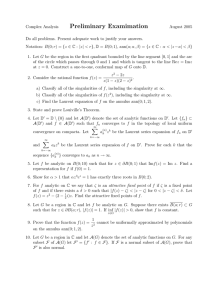

![Mathematics 414 2003–04 Exercises 4 [Due Monday February 2nd, 2004.]](http://s2.studylib.net/store/data/010415765_1-b159664fbd982cf95e1ae146093d034c-300x300.png)
